- Quick Read
- Deep Read ( 7 Min. )
Monitor Daily Podcast
- Follow us:
- Apple Podcasts
- Spotify
- RSS Feed
- Download
TODAY’S INTRO
An uncertain world and the search for paths forward
Today’s stories include the first in the Monitor’s “Navigating Uncertainty” series, waning confidence in the caucus system, a clarifying look at fears surrounding coronavirus, a search for justice for Flint, Michigan, and a selection of podcasts that promote compassion.
Surveying the world in 1930 – from the prison cell where Italian dictator Benito Mussolini had put him – the Communist thinker Antonio Gramsci came up with a pithy observation.
“The old is dying and the new cannot be born,” he wrote in his diary. “In this interregnum a great variety of morbid symptoms appear.”
Today, nearly 100 years later, a similar sense of uncertainty besets the world, and in today’s Christian Science Monitor we launch an ambitious series of articles exploring the reasons for that. Even more ambitiously, we suggest a few possible paths forward.
Our reporters have been searching for solutions in all sorts of places – from a boardroom in France where the bosses are rethinking capitalism to an underground bar in Brazil offering political refuge for activist opponents of the country’s strongman president.
For me, as a journalist covering international affairs, it is hard to miss the alarm felt in many capitals about the shape-shifting nature of geopolitics at the moment.
But citizens far from the corridors of power have other worries: What will artificial intelligence do to jobs? Could a strongman leader win votes by offering answers to problems that less decisive democratic politicians don’t seem able to find? How are the immigrants who just moved into the neighborhood going to change its identity?
At the heart of all the problems that beset us – and many of them are interconnected – is the issue of trust. Increasingly, governments don’t trust each other, citizens don’t believe their governments or experts, and often people don’t even have faith in their neighbors.
We hope the series that starts today will give you pointers to places where people are pushing back on that, building a sense of common purpose, trust and direction. Because we all have to start with ourselves.
Share this article
Link copied.

Help fund Monitor journalism for $11/ month
Already a subscriber? Login

Monitor journalism changes lives because we open that too-small box that most people think they live in. We believe news can and should expand a sense of identity and possibility beyond narrow conventional expectations.
Our work isn't possible without your support.
Navigating uncertainty
As global order creaks, what comes next?
We hear the worried question frequently: Where is the world headed? Many doubt the holding power of the democratic values, broader rights, and economic growth that have shaped the post-World War II world. Yet even amid deep uncertainty, many groups are trying to shape a path toward progress. This series, which starts today, travels the globe to see what they’re doing.

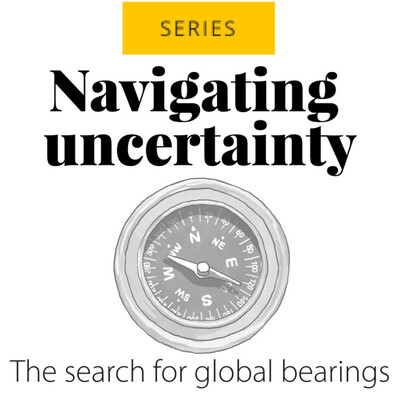
From the marbled halls of power to the streets of small towns around the world, a new and unsettling mood is abroad – a sense that the world is coming unmoored. The old certainties of the postwar global order are shaky; powerful new technologies can be frightening; citizens around the world are wondering what global warming will do to the planet, and many are losing their faith in governments to look after them.
The politics of anger and intolerance are on the rise.
But the future is not written in stone. It is not yet clear how far Washington will retreat from world affairs, nor how easily the Chinese government will be able to stamp its authoritarian style on other nations, for example.
And wherever you look there are people carving out a more hopeful future, trying to build a sense of shared purpose, trust, and direction. Will the young people leading the popular charge on climate change be able to make a difference? Will a new generation of business leaders do enough to restore flagging faith in capitalism? Can social media bring people together more often than they drive them apart?
The world may be in flux. But everything is left to play for.
As global order creaks, what comes next?
Her name is Margaret Farley, Maggie to her friends. She spent much of her adult life in Lower Falinge, a disadvantaged cluster of public-housing blocks near Manchester in northern England.
That is 5,014 miles away from Zhongnanhai, the government compound beside the Forbidden City in Beijing from which Chinese leader Xi Jinping rules China.
But Ms. Farley and Mr. Xi have something in common. That something, moreover, also ties them to the headquarters of NATO and the European Union in Brussels; to the marbled halls of government in Washington and the Kremlin; to residents of the favelas of São Paulo in Brazil, and the villages of Somaliland. And to Tehran and Baghdad, Damascus and Tripoli, in a newly fraught Middle East.
They all find themselves having to deal with a world that on multiple levels seems to have become unmoored.
It’s not just the geopolitics that have changed, with the shift of the center of gravity eastward toward a rising, authoritarian China, and the more inward-looking, nationalist approach of leaders like President Donald Trump in the United States, or Brazilian President Jair Bolsonaro. Old economic models – and, crucially, a whole raft of old technologies – have been left behind as well. The shine has come off globalization and its benefits since the world economic crash of a decade ago. Long-standing trade agreements have been giving way to tariff wars.
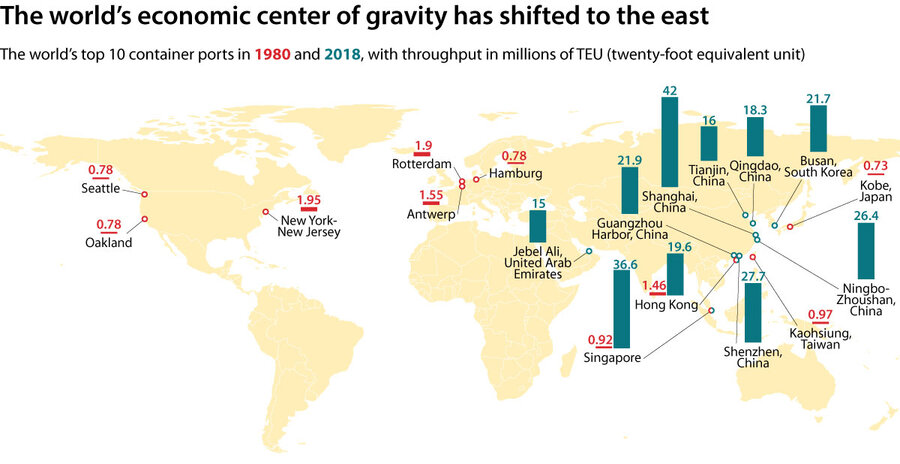
World Shipping Council; Dept. of Global Studies & Geography, Hofstra University
But as we’ll explore in a Christian Science Monitor series beginning today, many are now also searching, in a dramatically altered world, for ways to safeguard the core values and achievements of the post-World War II order: democracy and human rights, the freer movement of people, educational improvements, and economic growth.
Unsurprisingly perhaps, millions of people around the globe have been drawn to the politics of anger and intolerance. Conspiracy theories, amplified by the power and reach of the internet, have proliferated. Strongman leaders mixing populism with strident, even xenophobic, nationalism are gaining strength. Millions, too, have lost their trust in established national and international institutions to look out for their interests, and for their future. Or, for that matter, our warming planet’s future.
Even in economically advanced countries, despite the dizzyingly greater wealth of those at the very top, far more people, like Maggie in Lower Falinge, have been left wondering if the old maxim of “work hard, play by the rules, and you can make it” still holds.
Sound bleak? That’s understandable, given some of the changes already evident.
What next?
But here’s what should be more reassuring. We do not yet know how all this ends. We are in a period of turbulence and instability unprecedented during most people’s lifetimes. But we are also only at the beginning of defining what comes next.
It’s a critical inflection point.
It is also the starting point for our series. Once every two weeks, Monitor writers will be reporting on the causes, effects, and implications of this new world disorder: from Beijing and Hong Kong to Malaysia and Vietnam in Asia; from Russia to Britain, the Netherlands, and Portugal in Europe; from Jordan and Egypt in the Middle East to Somaliland in Africa; and from Seattle to Cuiabá, Brazil, in the Americas.
We’ll be looking at the seismic changes in geopolitics, but also at wider questions of economic change, technological change, climate change, and the future of democratic governance and human rights. We’ll be looking forward as well, sniffing for the first traces of an answer to the critical question of what comes next.
Is America’s retreat, begun under President Barack Obama but supercharged under President Trump, henceforth a fixed feature of world affairs? How will the United States – and other countries – respond to an increasingly assertive China? Will the trend toward strongman rule, populism, and nationalism gather further momentum, or will there be a revival of some form of international cooperation, perhaps in a different shape?
And while there will be no dispatch from Lower Falinge, Maggie’s personal story is important to one major theme of our series. For the question of what comes next is not for the superpowers alone to answer, nor for other national governments, whether or not they are led by strongman figures.
The directions that local communities, citizens’ groups, and even individuals around the world choose to take will also influence the outcome.
A bit player on a world stage
I first met Maggie, flanked by two reassuringly serene pet Rottweilers, at the time of the 2008 world financial crash, but the sense of alienation that I found among many residents of Falinge had been building for years.
The area enjoyed the unwanted distinction of being the “benefits capital” of Britain: More than three-quarters of its residents were living on state welfare payments. Rochdale, the town that Lower Falinge belongs to, had been a thriving center of the wool, cotton, and cloth trade at the height of Britain’s industrial power. But all of that had long gone.
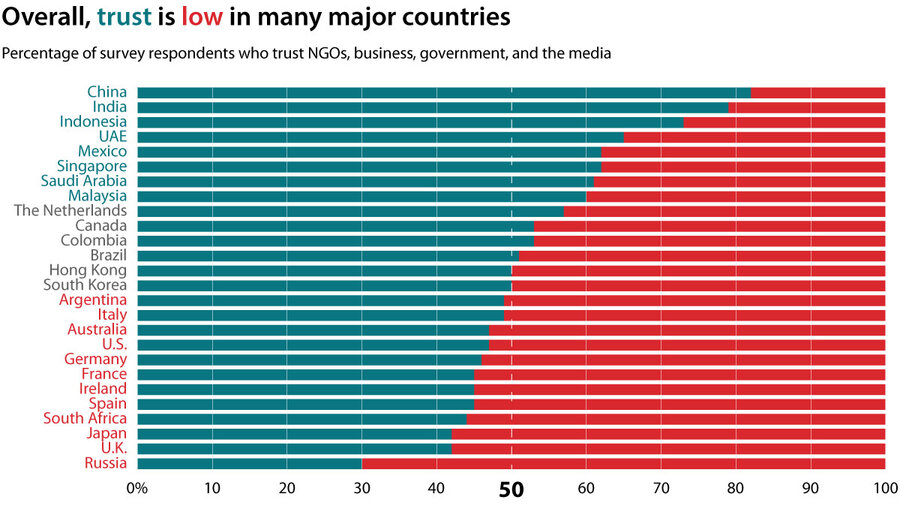
Edelman Trust Barometer
Maggie, like many of her neighbors, was unemployed. She’d been laid off from a part-time job at a nearby packing plant. But she was retraining – successfully, it turned out – in the hope of getting work as a security guard. She was also putting her teenage daughter through a course at a local technology college to equip her, again successfully, for similar work.
She was less bitter than nostalgic. In her teens she had done work in what was then known as the Youth Training Scheme, a government-run program. It had paid a pittance, she told me, “but it was a full-time job. We all did it. We got used to the hours. We got used to working. But many of the people here … haven’t worked for years.”
That had undermined their identities, and unmoored the community itself. Maggie’s concern was how her community could restack the building blocks that are critical to, but increasingly missing from, both local and global institutions: shared purpose, trust, agency, and direction.
We’ll be searching for clues as to whether those qualities may ultimately reemerge.
Will the youth-led popular movement to face the climate emergency make governments change their policies?
Will the activists who sought to put democracy and human rights on their governments’ agendas during the Arab Spring stay the course now that political winter has set in across the Middle East?
Or, will some of the old structures and strictures ultimately reassert themselves, as our look at Portugal might suggest – a small, pro-European Union country that has repaired its economy and defied the drift toward populism and nationalism?
To borrow from Irish poet William Butler Yeats, who in the aftermath of World War I wrote one of his most powerful poems, his tale of how “things fall apart,” can the center hold?
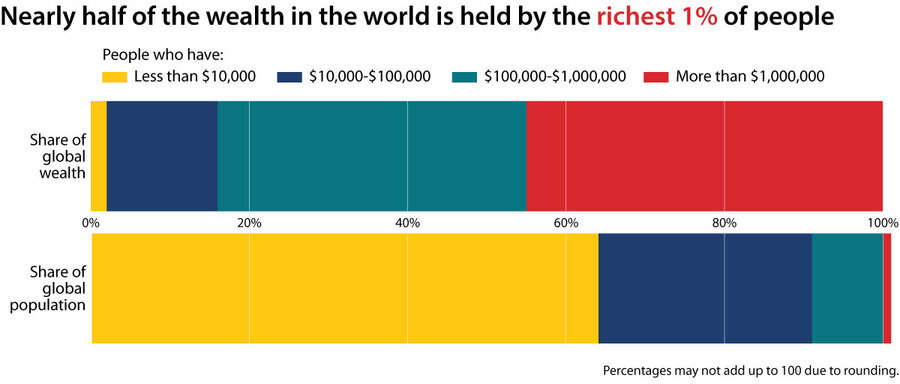
Credit Suisse
History starts again
The geopolitical challenges are daunting. It took two world wars, but over several decades beginning in the 1940s, a fairly stable world order emerged. The U.S. forged a close economic, political, and defense partnership with the countries of Western Europe. The Americans’ rival superpower, the Soviet Union, dominated Eastern Europe. And though there were crises – the Cuban missile showdown, the U.S.-Soviet standoff in Berlin – both sides, and the wider world, knew and respected the rules of engagement. That is no longer the case.
With the fall of the USSR and its client East European governments, a brief flame of hope flared that the world was on the brink of a new, shared international commitment to the model of free-market democracies. Political scientist Francis Fukuyama went so far as to proclaim “the end of history,” arguing that Western liberal democracy had comprehensively triumphed.
He spoke too soon. Now, if there is a single defining power rivalry in the world, it pits the U.S. against an increasingly well-resourced and ambitious China. And under President Trump, the contest is becoming increasingly bipolar because Washington has called into question its commitment to alliances not only in Europe but in Asia as well.
Russia, meanwhile, ruled by a president who has described the collapse of the USSR as the overriding tragedy of his lifetime, has been moving to reassert Moscow’s influence on the world stage.
Domestic politics in many countries present challenges as well: the angry tone, the rise of populism, the stoking of division – the selfsame trends that led Yeats, nearly a century ago, to lament that “the best lack all conviction, while the worst are full of passionate intensity.”
Yet two other areas of change that our series will explore, technological and economic, may provide a counterweight. For our world has not only been getting warmer; it’s been getting smaller, more intimately and immediately interconnected. The same communications technology that has sometimes fed extremism or spread fake news – a kind of anti-social media – has also been used by pro-democracy movements from Somalia to Hong Kong.
And in the economic field, some of the world’s most influential business leaders are beginning to question the unbridled pursuit of profit that has riven modern capitalist societies into haves and have-nots. Will their homilies about ethical capitalism pave the way for greater social justice?
Surveying the world in 1930 from the prison cell to which Italian dictator Benito Mussolini had condemned him, the Communist thinker Antonio Gramsci observed that “the old is dying and the new cannot be born; in this interregnum a great variety of morbid symptoms appear.”
That entry in his prison diary serves as a reminder: In times of turbulence, however bleak the apparent outlook, now as 90 years ago, the next chapter has yet to be written.
You'll find other installments in the Navigating Uncertainty series here.

Edelman Trust Barometer

As Nevada prepares to vote, caucuses themselves are on the line
Nervous party officials acknowledge that Saturday’s caucuses could be the last hurrah for a complex system that favors party activists. Still, a successful event, combined with early voting, could preserve the system.

- Quick Read
- Deep Read ( 5 Min. )
Ever since the debacle in Iowa, Kimi Cole has been fielding multiple calls a day from Nevadans feeling anxious about their state’s upcoming presidential caucuses.
They’re asking, why not just get rid of caucuses and hold a simple primary instead, says Ms. Cole, rural caucus chair of the Nevada Democratic Party in Douglas County, which borders Lake Tahoe.
In order to open up the process to more people, Nevada Democrats added early voting to their caucus this year. And if the early voting process offers any indication of how Saturday will go, Nevada may be in for a bumpy ride. As the first day of early voting began at the Cardenas Market in east Las Vegas, just two volunteers were working with iPads to check a long line of people in.
Still, some experts can see the Nevada caucuses surviving if they can make this new hybrid work. Switching back to a primary is not as simple as it might sound – state Republicans pushed for a primary in 2014 and failed. And then there’s the much bigger question of what might happen to Nevada’s place in the presidential primary calendar. “My main question is, will Nevada lose its standing in the country?” asks Ms. Cole.
As Nevada prepares to vote, caucuses themselves are on the line

Ever since the debacle in Iowa, Kimi Cole has been fielding multiple calls a day from Nevadans feeling anxious about their state’s upcoming presidential caucuses.
They’re asking, why not just get rid of caucuses and hold a simple primary instead, says Ms. Cole, rural caucus chair of the Nevada Democratic Party in Douglas County, which borders Lake Tahoe. With all eyes on Nevada as it prepares for Saturday’s voting, Iowa is a “fresh wound in many people’s minds,” she says.
Even before Iowa, Ms. Cole says she was asked whether it made sense to continue holding caucuses. The problems with Iowa’s app for recording results – software Nevada was also planning to use but has now dropped – has dramatically intensified the debate about the future of caucuses in the Silver State and elsewhere. Democratic National Committee chair Tom Perez and other leading party figures are urging an end to the process altogether.
Caucuses date back to the early 1800s, when party bosses chose nominees behind closed doors. More accessible primaries gained ground in the Progressive Era, but were nonbinding. Democratic reforms in the 1970s led to today’s primary system, but a dwindling number of states and territories still hang on to caucuses. Today’s debate pits a complex system that favors party activists and rewards a candidate’s ground game against a streamlined process that’s more accessible to voters, and, many argue, is more democratic.
Nevada is actually a relative newcomer to caucuses. At the urging of former Democratic Sen. Harry Reid, Nevada switched in 2008 from holding a presidential primary in June to a caucus in February. This made Nevada the “first in the West,” balancing out Iowa and New Hampshire in both geographic and racial diversity, and greatly raising the state’s profile and influence. It still holds a primary in June, but for other offices.
Interviews at early voting sites in Las Vegas over the weekend found many voters eager to ditch the caucus system. This city, by far the state’s largest, runs 24/7. Not everyone can commit to an hourslong gathering on a given date, where voters try to convince each other to back their preferred candidate, and delegates are apportioned based on a complex formula.
“It’s a thing of the past century,” says Jose Martinez, who works as a porter at The Mirage hotel and casino, and favors returning to a primary.
Iowa’s faulty app was the least of its problems, adds Wayne Steger, professor of political science at DePaul University in Chicago and a native Iowan. The bigger issue was new DNC rules requiring precincts to report the first alignment of votes, the second alignment of votes, and the final delegate count, even as caucus participants arrive late and leave early. “It’s so easy to make a mistake,” he says.
In order to open up the process to more people, Nevada Democrats added early voting to their caucus this year. For four days ending Feb. 18, Democrats could vote at any designated place in their county. Early voters were told to mark a minimum of three choices in order of preference on paper ballots, and the results will be combined with caucus results on Saturday. Essentially, it’s a caucus combined with a ranked-voting primary.

If the early voting process offers any indication of how Saturday will go, Nevada may be in for a bumpy ride.
Over the weekend, long lines were reported at various early voting sites – including neighborhood libraries, grocery stores, union halls, and hotel-casino resorts on the Las Vegas strip. On the first day of early voting at the Cardenas Market in east Las Vegas, a line stretched in front of the deli counter, turned a corner past stacks of paper towels, and finally came to a stop at a table with only two volunteers working to check people in.
“I don’t want to criticize the volunteers, but I’ve been in line for 45 minutes and I’ve seen less than 10 people vote,” offered Jimmy Emerson, an entertainer who said he was late for a church meeting.
A volunteer had to scroll on an iPad through the county’s enormous database of registered voters to confirm a name. Then another volunteer, also equipped with an iPad, had to complete the process by filling out a Google-based form. To speed things up, some voting places abandoned that second step, which they said did not affect the integrity of the process.
As one voter finished up at the supermarket, she shook her head and muttered that she should have gone to the union voting place. Indeed, the powerful Culinary Union Local 266 had 14 volunteers checking people in and more volunteers helping with questions about the ballot.
One campaign staffer who did not want to be named expressed hope that everything will turn out fine in the end, while a staffer from another campaign was skeptical about the last-minute ditching of the Iowa app, as well as the added wrinkle of early voting.
“We are incredibly frustrated by the communication – and lack thereof – from the party,” said this staffer. “We are very concerned about precinct captains being trained at the very last minute and having to learn new math.”
Nevada’s history with caucuses is not exactly encouraging. In 2008, the Nevada State Education Association sued the Democratic Party over at-large precincts that they felt disadvantaged their preferred candidate. In 2012, Republicans in Clark County – home to Las Vegas – had to conduct a time-consuming manual recount.
In 2016, acrimony exploded as Vermont Sen. Bernie Sanders decried the Nevada caucus process as rigged. The complaints helped lead to this year’s changes in caucus reporting rules.
Still, “I can see something like the Nevada caucuses surviving” if they can make the new hybrid work, says Rebecca Gill, associate professor of political science at the University of Nevada in Las Vegas. Caucus day satisfies the activists who are passionate about the process and makes for a major media event. At the same time, the early voting allows many more people to participate.
Ms. Cole, the state’s rural county caucus chair, says switching back to a primary is not as simple as it might sound. For one thing, the state legislature would have to change the law. Republicans pushed for a primary in 2014 and failed. And then there’s the much bigger question of what might happen to Nevada’s place in the primary calendar. “My main question is, will Nevada lose its standing in the country?” she asks.
“We were way down the list previously, and for us to be No. 3 has made it so that now the pundits are saying we should be No. 1,” former Senator Reid told reporters on Saturday. “When we finish with Super Tuesday, we’ll revisit that issue as to whether we should have caucuses or direct primaries.”
By the end of this weekend, that answer could be abundantly clear.

The Explainer
Coronavirus outbreak: Three questions on Beijing’s response
Outbreaks create fear – not just of disease, but sometimes of the places they originate and the people who live there. Taking a step back gives some perspective on China’s crisis.

- Quick Read
- Deep Read ( 3 Min. )
For the past 70 years or so, a major outbreak has come out of China roughly every decade – right up to the current coronavirus.
Given that China has 1.4 billion people, and nearly 30 of the world’s 100 most populous cities, perhaps that isn’t surprising. But there are some unique factors that shape outbreaks’ origins, and Beijing’s response – not to mention, how the rest of the world can or can’t help.
Take Beijing’s tight grip on the media. Authorities were slow to publicize the threat to their own public, which experts say could have helped the virus spread. Early on, doctors drawing attention to the problem were accused of “rumormongering,” and two bloggers writing about the virus have disappeared.
Yet when it comes to informing the rest of the world, Beijing has acted far more quickly than it did in 2003, during the SARS epidemic. And that means governments, foundations, and international organizations have begun pouring hundreds of millions of dollars into the fight – though the extent of aid China will allow is unclear.
Coronavirus outbreak: Three questions on Beijing’s response

When coronavirus first started dominating global headlines, it quickly raised alarm – but maybe not surprise. Every decade or so, a major outbreak has come out of China, from the 1957 Asian flu to the SARS epidemic in 2003.
Why is that? It’s hard to say – and worth keeping in mind that other parts of the world have also experienced outbreaks in recent years, such as the 2009 swine flu pandemic that started in Mexico, and the MERS coronavirus that originated in Saudi Arabia in 2012. Many Chinese at home and abroad have raised concern about increased bias since this outbreak came to light.
Here’s a look at how China’s top-down politics plays into public health, as well as what Beijing and the rest of the world are doing to stem the tide.
Why does China see so many outbreaks?
Contributing factors include sheer demographics. China’s huge population of 1.4 billion includes nearly 30 of the world’s 100 most populous cities. Adding to this is the close proximity of city and farm dwellers and animals. Chinese leader Xi Jinping criticized the “bad habit” of eating wild animals as “a major hidden danger to public health” and ordered a crackdown on illegal wildlife markets that Chinese researchers have identified as a source of virus transmission.
Beijing’s tight grip on media also plays a role. Chinese authorities were slow to publicize the threat to their own public. “Information could have been shared with the public earlier in ways that would have helped reduce the probability of the virus spreading so far and so fast,” says Jeremy Lee Wallace, an associate professor at Cornell University who researches authoritarian politics and China. Early on, doctors drawing attention to the problem were accused of “rumormongering,” and two bloggers writing about the virus have disappeared. Observers have also noted that regional officials may have been reluctant to share bad news with Beijing.
Two months into the outbreak, how is China responding?
Beijing has acted far more quickly in informing the international community about the current outbreak than it did during the SARS epidemic, experts say, despite censorship within China. In 2003, “there was a lot of secrecy” and “a long delay in China notifying internationally,” says Ann Marie Kimball, a physician and epidemiologist who led the APEC Emerging Infections Network at the time. In contrast, this time China’s health authorities announced the discovery of the coronavirus and within a week had published the genomic sequence, “so all around the world countries could begin to understand it,” says Dr. Kimball, now a senior fellow at the Center on Global Health Security at Chatham House. “China has demonstrated an incredible technological depth.”
But experts question the effectiveness of China’s massive lockdown and quarantine of Wuhan, a city of 11 million. Concentrating people in large facilities risks worsening the spread, especially as critical supplies are running short. “The containment strategy is going to be very challenging for them to be successful with,” says Dr. Kimball.
How can the rest of the world help?
Governments, foundations, and international organizations are pouring hundreds of millions of dollars into the fight. The U.S. government has pledged up to $100 million to help China and other affected countries, and has facilitated the transport of more than 17 tons of masks, respirators, and other supplies to China. Meanwhile, the Bill & Melinda Gates Foundation is donating up to $100 million to improve detection, isolation, and treatment efforts, says Jeff Hall, a deputy director at the foundation.
Nevertheless, China was slow to grant access to experts from the World Health Organization, approving a 12-member team for arrival in mid-February.
“Whether humanitarian actors will be allowed to go in and provide the type of support that is usually needed in a potential humanitarian crisis of this magnitude remains to be seen,” says Gabrielle Fitzgerald, founder and CEO of Panorama, a Seattle-based “action tank,” who has worked on combating Ebola and malaria. “China has really closed themselves off to everyone … but obviously if the situation gets significantly worse they may need to admit they need help and call on other actors to support them.”

Six years on, Flint works toward justice in water crisis
Addressing an issue as big as a compromised water supply takes a number of forms. There’s the legal front, as well as work on infrastructure. Perhaps most critical: the rebuilding of public trust.
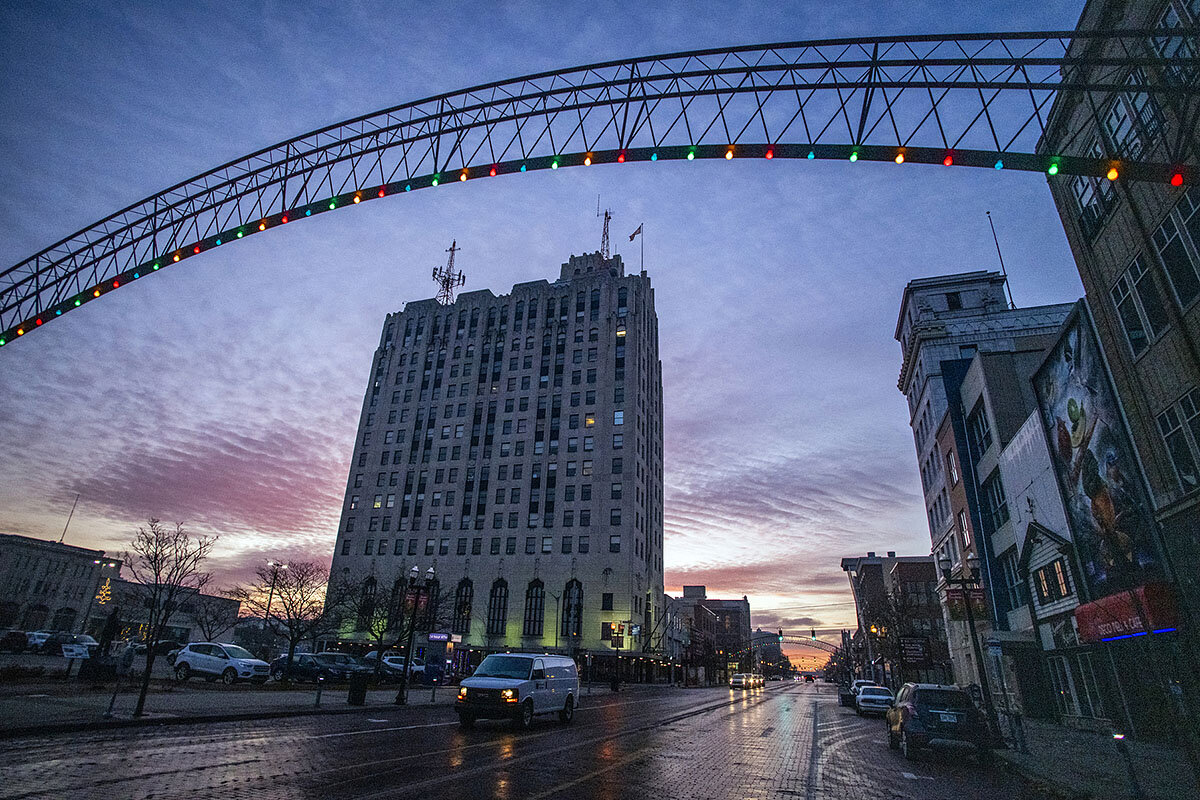
- Quick Read
- Deep Read ( 7 Min. )
-
By Lee A. Dean Contributor
Karen Eaton, a longtime resident of Flint, Michigan, lives in a house built in 1920. She’s part of a class-action lawsuit stemming from the 2014 switch in the city’s water supply. The change had a detrimental effect on the city’s aging pipes and was linked to skin rashes, hair loss, lead poisoning, and an outbreak of Legionnaires’ disease. “Somebody needs to be held accountable,” Ms. Eaton says.
The resulting courtroom battles have revolved around two conflicting legal doctrines. The plaintiffs allege that their civil rights under the 14th Amendment’s due process clause were violated. In particular, they maintain that their “bodily integrity” was harmed by decisions made by officials without regard to human health.
Attorneys for the defendants claim a “qualified immunity” protects them from liability for their decisions. However, the 6th U.S. Circuit Court of Appeals ruled that any claim of qualified immunity was overruled by what was perceived as the egregious conduct of the government officials.
“There’s certainly a real loss of public confidence among the citizens of Flint toward any governmental authority,” says Professor Barry Rabe of the University of Michigan. “There’s no easy resolution to this.”
Six years on, Flint works toward justice in water crisis
Water coming from faucets in this city is no longer discolored or malodorous. Truckloads of bottled water from other communities have slowed to a trickle. These improvements do not mean that Flint’s water crisis is over. Instead, a new and uneasy normal has settled in.
“One of the lingering effects is the pall that has been cast over this city,” says the Rev. Deborah Conrad, pastor of Woodside Church, a multidenominational congregation in the heart of downtown Flint. “It’s a kind of a depression, an unwillingness to trust. There are lingering mental and physical effects we cannot measure and won’t know for a long time.”
The persistent mistrust from citizens is directed squarely at government officials who were the key players in what a federal appellate court opinion called “the infamous, government-created disaster commonly known as the Flint Water Crisis.” Those officials – at all levels – are at the center of an ongoing question that transcends partisan politics in this city of just under 100,000: What would constitute justice in the Flint water crisis?

“There’s no easy resolution to this,” says Barry Rabe, a professor of public and environmental policy at the University of Michigan. “Court cases take time. Cleaning up the water system takes time. There’s certainly a real loss of public confidence among the citizens of Flint toward any governmental authority. So it’s not just a question of a short-term engineering fix. It’s a rebuilding of public trust and confidence.”
In April 2014, a state-appointed emergency financial manager with power to supersede local authorities switched Flint’s water supply from the city of Detroit to the Flint River, a move that was expected to save the cash-strapped city money. This water was processed without adding anti-corrosive chemicals and then pumped through the city’s aging pipes. The result was a water supply linked to skin rashes, hair loss, lead poisoning, and an outbreak of Legionnaires’ disease blamed for 12 deaths.
Nearly 80 lawsuits have been filed against the state of Michigan, the city of Flint, and the federal Environmental Protection Agency. A few citizens have hired their own attorneys, but the vast majority have joined in a class-action suit. Attorneys for the state and city were attempting to have the civil cases dismissed and had appealed a decision by the 6th U.S. Circuit Court of Appeals to allow some of the cases to continue. In late January, the U.S. Supreme Court refused to review the lower court’s decision, meaning that the civil cases can now proceed.
The courtroom battles revolve around two conflicting legal doctrines: bodily integrity and qualified immunity. The plaintiffs are alleging that their civil rights under the 14th Amendment’s due process clause were violated. In particular, they maintain that their bodily integrity was harmed by decisions made by the officials based solely on saving money and without regard to human health.
The water crisis was another blow to Flint, which calls itself Vehicle City in reference to its former prominence in world automobile manufacturing. The decline of the U.S. auto industry led to a corresponding decline in the city’s population, which has dropped sharply from a high of 196,940 in the 1960 census to 95,943 in a 2018 census estimate.
A right to clean water
Theodore Leopold of the law firm Cohen Milstein, one of the lead attorneys for the plaintiffs in the class-action suit, says bodily integrity refers to the protection of citizens’ “inherent and constitutional rights, such as the ability to have clean water and that one group should not be segmented over another from having these rights.” Mr. Leopold says his clients are seeking justice for individual injuries along with damages to personal property and businesses affected by water contamination.
Attorneys for the defendants claim a qualified immunity protects them from liability for their decisions. The 6th Circuit ruled that any claim of qualified immunity was overruled by what was perceived as the egregious conduct of the government officials.
Initially, criminal charges were brought against eight government officials. Last June, Michigan Attorney General Dana Nessel dropped these charges, saying the original investigation begun by her predecessor, Bill Schuette, was too flawed to pursue. Those officials may not yet be in the clear. Ms. Nessel’s office is not commenting on the specifics of any future litigation, but communications director Kelly Rossman-McKinney says work is underway in both criminal and civil arenas.
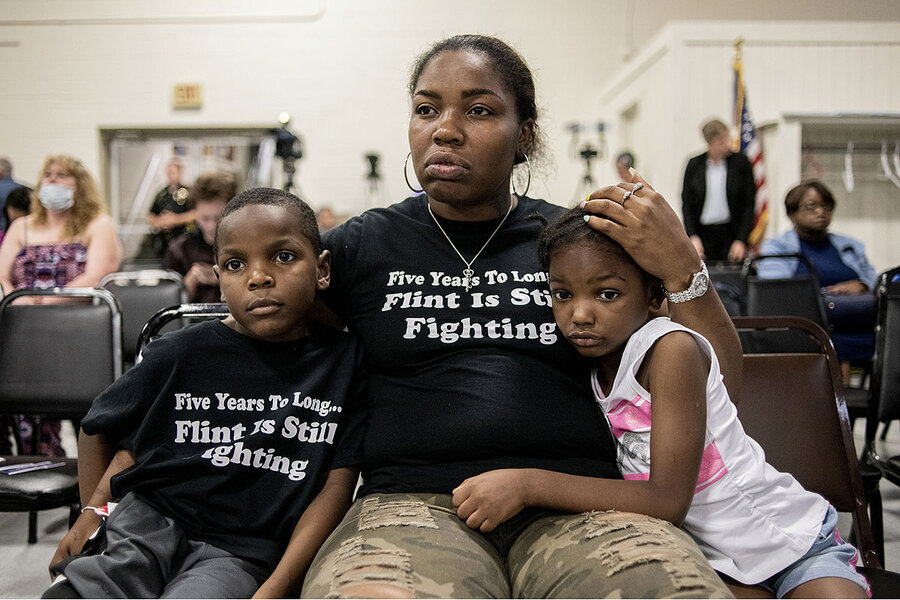
“We recently opened a satellite office in Flint where members of our team are able to meet with community members as we move forward,” says Ms. Rossman-McKinney.
Government officials named in the criminal charges included two of the emergency managers appointed by the state for Flint. Six other officials in the state Department of Environmental Quality and the Department of Health and Human Services faced charges alleging covering up testing data and emails. Complaints against higher-level government officials, including former DEQ Director Dan Wyant and former MDHHS Director Nick Lyon, were dismissed by the U.S. Court for the Eastern District of Michigan.
Peter Jacobson is professor emeritus of health law and public policy at the University of Michigan. He was a consultant for the legal team defending Mr. Lyon, who was facing criminal charges of misconduct in office and involuntary manslaughter.
“One of the reasons I wanted to be one of Nick’s lawyers was that I felt charging health department officials criminally would have serious adverse public health consequences,” says Mr. Jacobson, adding that the charges against Mr. Lyon and another MDHHS official, Eden Wells, were never provable. “The Flint community wants retribution and accountability. I agree with that. But what does that mean? Sure, they want to see Nick go to jail, but that doesn’t solve anything.”
“Public health is already a risk-averse profession. The fear of a criminal prosecution if you get it wrong will have a chilling effect, not just on day-to-day activities but on broader questions. Take the coronavirus issue: Do you really want a health department to be bashful and risk-averse in confronting this disease because it doesn’t have the community’s trust?”
An even tougher undertaking
Flint residents are watching as their city undertakes the arduous task of rebuilding its water infrastructure. Rebuilding public trust in government institutions and personnel may be an even tougher chore. Although water testing data show that lead levels are at safe levels, residents are still cautious, buying bottled water at stores and subscribing to outside water delivery services. The ongoing work of replacing the city’s piping system has also had its glitches, including complaints of property damage by workers.
“When the homeowner isn’t there, the workers are not able to get into all the houses to replace all the pipes,” says Ms. Conrad, the pastor. “If they can’t replace all the pipes, the water system is not 100% secure. It’s kind of like justice. There’s no justice for anybody if there’s no justice for everybody.”
The trust issue has a unique impact on the city’s Hispanic community. At the height of the crisis, when efforts were made to canvass residences for distribution of water filters and inspections, many unauthorized immigrants would not come to the door, says Juani Olivares, president of the Genesee County Hispanic Latino Collaborative. Local charities pitched in to purchase water filters for distribution to the affected immigrants.
Public policy staff, and health workers in particular, will be walking point in the effort to regain public trust and restore a sense of justice. The job won’t be easy, according to Professor Rabe, who uses the Flint saga in his course on performance management.
“It’s not clear to me that in Flint you could reinvent trust where people feel the matter is resolved or they have received some compensation accordingly,” says Professor Rabe. “This is one of those classic environmental health stories where I fear public trust for government has been harmed, if not shattered.”
If the class-action lawsuits succeed, judgment will likely entail a financial payout to be shared with the thousands of plaintiffs who are part of the class. But the litigation is not about financial gain, according to some Flint residents.
“Justice means that some people are held accountable,” says longtime Flint resident Karen Eaton, a member of Woodside Church who lives in a house built in 1920 and who is part of the class-action lawsuit. “I’m 77 and I’ve never experienced this kind of dismissiveness before. I’ve never felt I wasn’t important enough to pay attention to. Somebody needs to be held accountable.”
Editor’s note: The caption for one of the photographs has been revised so that it lists the correct order for the four individuals shown in the picture.

Three podcasts to replenish your faith in kindness
In a world often riven by hate, three podcasts take distinct approaches to understanding and instilling compassion and empathy.
Three podcasts to replenish your faith in kindness

Kindness is a powerful instrument of change. Here are three podcasts (and some bonus episodes) that take distinct approaches to understanding and instilling compassion and empathy. As with any podcast, the quality may be uneven from episode to episode, but on the whole, these choices inspire in their own unique ways.
1. Finding Fred
Host Carvell Wallace – a former parenting advice columnist at Slate – explores why “Mister Rogers’ Neighborhood” remains relevant five decades after the TV show debuted in 1968. What does the enduring popularity of Fred Rogers say about us and our society? This podcast series leans on show clips and interviews with experts to look at why a program most widely watched by 4-year-olds is embraced by adults today for what it teaches us about empathy, compassion, and complex moral and spiritual concepts. In short, what can Mr. Rogers teach us about being better neighbors? 10 episodes.
2. Kind World
This WBUR public radio podcast offers inspiring stories of kindness that are relatively short (12-20 minutes). A recent episode interviews Nancy Davis Kho, who wrote a book about her year spent writing one-page “thank you” letters. Ms. Kho discovered how transformative gratitude can be. Another episode profiles Rais Bhuiyan, an immigrant from Bangladesh, who was shot in the face by a white supremacist in Texas. Mr. Bhuiyan survived, and later founded a nonprofit, World Without Hate, to help end the behaviors that fuel racism. “If we decide to get beyond hate, we can do it. Americans are capable of extraordinary compassion and grace,” he says.
A new season of “Kind World” starts in March.
3. The Science of Happiness
The premise: We can take practical – research-based – steps to happier lives and a more compassionate society.
In a recent episode, comedian Maz Jobrani tells about his – and his family’s – experience of writing down three good things that happened daily during a trip to Japan. In another, neuroscientist Lisa Genova tries four action steps toward “creating and recalling positive events.” In another, a stressed-out high school student employs a little self-compassion. After getting a lousy grade, he talks to himself the way he would talk to a friend – with compassion and encouragement, instead of self-recrimination. Most episodes are about 20 minutes. They are produced by the Greater Good Science Center at the University of California, Berkeley.
4. Episodic Kindness, Generosity, and Compassion.
Here are some individual episodes (within other podcasts) that focus on the subject of compassion.
Perception Gaps: The Generosity Game
This episode, by The Christian Science Monitor, is about generosity, and what factors go into how generous you are. If you had to guess, who is more generous, churchy American conservatives or bleeding heart liberals? You might immediately say conservatives ... or liberals. The answer: It’s both and neither. And that’s a perception gap. This episode also looks at research about the connection between money and happiness.
NPR’s Ted Radio Hour: Wired for Altruism?
In this January 2019 episode, host Guy Raz interviews four experts who tackle such questions as what motivates us to be altruistic, what limits us, and how far would you go to help others?
NPR’s Ted Radio Hour: Approaching with Kindness
In this January 2019 episode, five experts are asked about the power of gratitude and appreciation, including, How can kindness disarm hate?
Other headline stories we’re watching
(Get live updates throughout the day.)The Monitor's View
Afghan triumphs drive an Afghan truce
- Quick Read
- Deep Read ( 2 Min. )
-
By the Monitor's Editorial Board
Since the United States-led invasion 18 years ago, Afghanistan has experienced uneven progress toward a democratic society. Attacks by the rural-based Taliban remain high. Yet progress is palpable enough that it partly explains why the U.S. and Taliban are ready to ink an agreement on a pathway for peace.
For now, the details of the proposed agreement are less important than its initial requirement: a seven-day “reduction of violence” between U.S. and Taliban forces. The limited truce, which could start in coming days, will be a test of credibility for Taliban leaders.
Over 18 years, Afghan society has changed enough that perhaps the Taliban know they must earn people’s trust rather than impose their harsh Islamist ways. Or as Afghan President Ashraf Ghani challenged the militant group: “If people elect you dogcatcher, then I would say you really have a power base. Guns are not the basis of power.”
Afghans may be divided by politics and ethnic feuding. Yet their preference for reconciliation and for the protection of their democratic achievements is clear. It will be difficult to ignore their preferences during the coming negotiations.
Afghan triumphs drive an Afghan truce
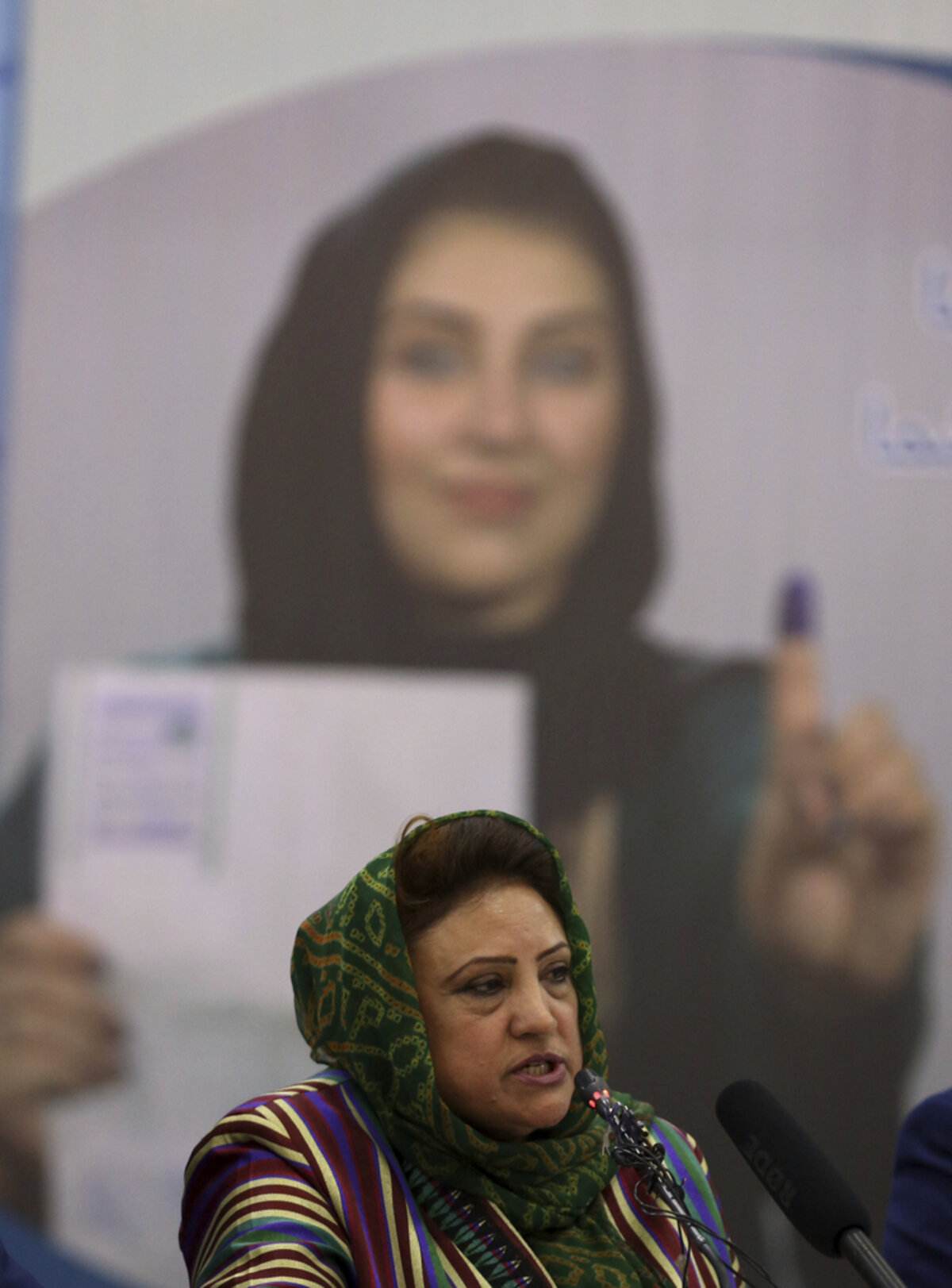
Women in Afghanistan now attend university in record numbers. In the capital, Kabul, a fast-food restaurant just introduced the country’s first robotic waiter. On Tuesday, officials announced the results of a presidential election – the fourth since the ouster of the Taliban. And in the latest survey, 64% of Afghans say they believe reconciliation with the Taliban is possible, a jump of 11 percentage points in only one year.
Since the United States-led invasion 18 years ago, Afghanistan has experienced slow and uneven progress toward a free and democratic society. Attacks by the rural-based Taliban remain high. Yet progress is palpable enough that it partly explains why the U.S. and Taliban are ready to ink an agreement on a pathway for peace.
For now, the details of the proposed agreement are less important than its initial requirement: a seven-day “reduction of violence” between U.S. and Taliban forces. The limited truce, which could start in coming days, will be a test of credibility for Taliban leaders. Can they control their lower ranks? Will they eventually keep a total cease-fire?
Over 18 years, Afghan society has changed enough that perhaps the Taliban know they must earn people’s trust rather than impose their harsh Islamist ways. Or as Afghan President Ashraf Ghani challenged the militant group: “If people elect you dogcatcher, then I would say you really have a power base. Guns are not the basis of power.”
If the short “reduction in violence” period succeeds, it might inspire confidence for a sequence of other trust-building steps, such as the start of a partial withdrawal of U.S. troops and an exchange of prisoners by the Taliban and Afghan government. The most significant step would be the Taliban starting direct talks with Mr. Ghani’s elected government.
These “intra-Afghan” talks would imply a tacit approval by the Taliban of a willingness to work within a democracy and its acknowledgment of how much Afghans support – 87% according to the survey – the rights and liberties of their constitution.
The Taliban may finally be accepting the limits of fighting to achieve their aims. In the U.S., both President Donald Trump and his Democratic rivals for the White House seek to end America’s longest war. Yet it is the Afghans themselves, in how they have been able to improve their lives and how much they cherish their civic rights, who are setting the table for the difficult and complex talks ahead. Afghans may be divided by ethnic feuding and divided politics. Yet their preference for reconciliation and for the protection of their democratic achievements is clear. It will be difficult to ignore their preferences during the negotiations.

A Christian Science Perspective
Each weekday, the Monitor includes one clearly labeled religious article offering spiritual insight on contemporary issues, including the news. The publication – in its various forms – is produced for anyone who cares about the progress of the human endeavor around the world and seeks news reported with compassion, intelligence, and an essentially constructive lens. For many, that caring has religious roots. For many, it does not. The Monitor has always embraced both audiences. The Monitor is owned by a church – The First Church of Christ, Scientist, in Boston – whose founder was concerned with both the state of the world and the quality of available news.
We can make a difference
- Quick Read
- Read or Listen ( 3 Min. )
-
By Sharon Slaton Howell
Sometimes a perception of uncertainty in today’s world can make a desire to better it feel futile; yet many people are finding ways to make a difference. For all of us, a heartfelt desire to live the Love that is God brings the healing, saving light of God to our activities in tangible ways, as a woman experienced during a threatening situation.
We can make a difference
No matter how complex or hopeless the challenges facing humanity seem, you and I can make a difference. Bettering the world must begin at the individual level, and the key to this individual work is love.
“All right,” one might say. “Perhaps more love is needed. But I’m just one person. What can I do to lessen fear and misunderstanding in the world?” We can find encouragement in the Bible assurance, “The effectual fervent prayer of a righteous man availeth much” (James 5:16).
Mary Baker Eddy, the discoverer of Christian Science, refers to prayer as “an unselfed love” (“Science and Health with Key to the Scriptures,” p. 1). Throughout my life I’ve seen that the most effective prayer is based on the idea of man and the universe as the spiritual and flawless creation of God. Through prayer we come to see more clearly that God, divine Love, ceaselessly maintains all creation in its original, perfect state. This empowers us to live this spiritual fact in daily life.
Equipped with such understanding, Christ Jesus resolved every problem that confronted him, including stilling a storm, feeding crowds of people, and curing what had been labeled incurable diseases. Each of us can strive to follow Jesus’ example of loving on this Christly basis; to be unselfish, merciful, and kind; and to let the light of our God-reflecting spirituality shine. No matter how sore society’s ills seem, unselfed, spiritual love holds the answer, along with the unshakable understanding that God is divine Spirit, and God’s creation, spiritual.
Some years ago I was serving as a Christian Science minister for armed services personnel in a country halfway around the world from my home. One day while putting up notices for a meeting, I was suddenly struck very hard on my back and shoved into the bulletin board. Turning around, I saw a young man of a different race than I with an angry look on his face.
This military post had recently been the scene of racial unrest, so it would certainly have been logical to feel fearful at that moment. But instead of feeling afraid, I felt a wave of compassion sweep over me. My heart went out to this man. I mentally affirmed divine Love’s governing presence, acknowledging that God’s love was encompassing us both and holding us beyond the reach of ill will, misunderstanding, or harm.
At once, the defiant look left the man’s face. We actually smiled at each other, and an unfortunate incident was quickly averted.
Every time we bring harmony to a discordant situation, show love in the face of hate, and embrace others in the understanding that man’s true being is spiritual – the reflection of God’s being – we are making a very important contribution to healing the world’s ills. The resolution of our individual issues on this basis indicates that being is truly spiritual under all circumstances, and praying to understand this helps pave the way for better global conditions.
The ability to demonstrate kindness, compassion, forgiveness, warmth, and unselfishness is not the prerogative of a chosen few. It is natural to all men and women, since each of us, in our real being, is the reflection of ever-present and inexhaustible divine Love. The material view of man we see all around us is vastly different from this. But if we gain even a glimmer of understanding that all individuals are the children of God, we have a real basis for seeing that our fellow beings – whether next door to us or on the other side of the globe – can naturally express and respond to divine Love.
Each of us can bear witness to divine Love, can be and do right by bestowing upon our fellow beings the love God is pouring out to us and all. You and I can make a difference in the world as we live in our daily activities the Love that is God, thus bringing to the dark places of fear and unhappiness the healing, saving light of divine Love.
Adapted from an article published in the Aug. 5, 2019, issue of the Christian Science Sentinel.

A message of love
The calm after the storm
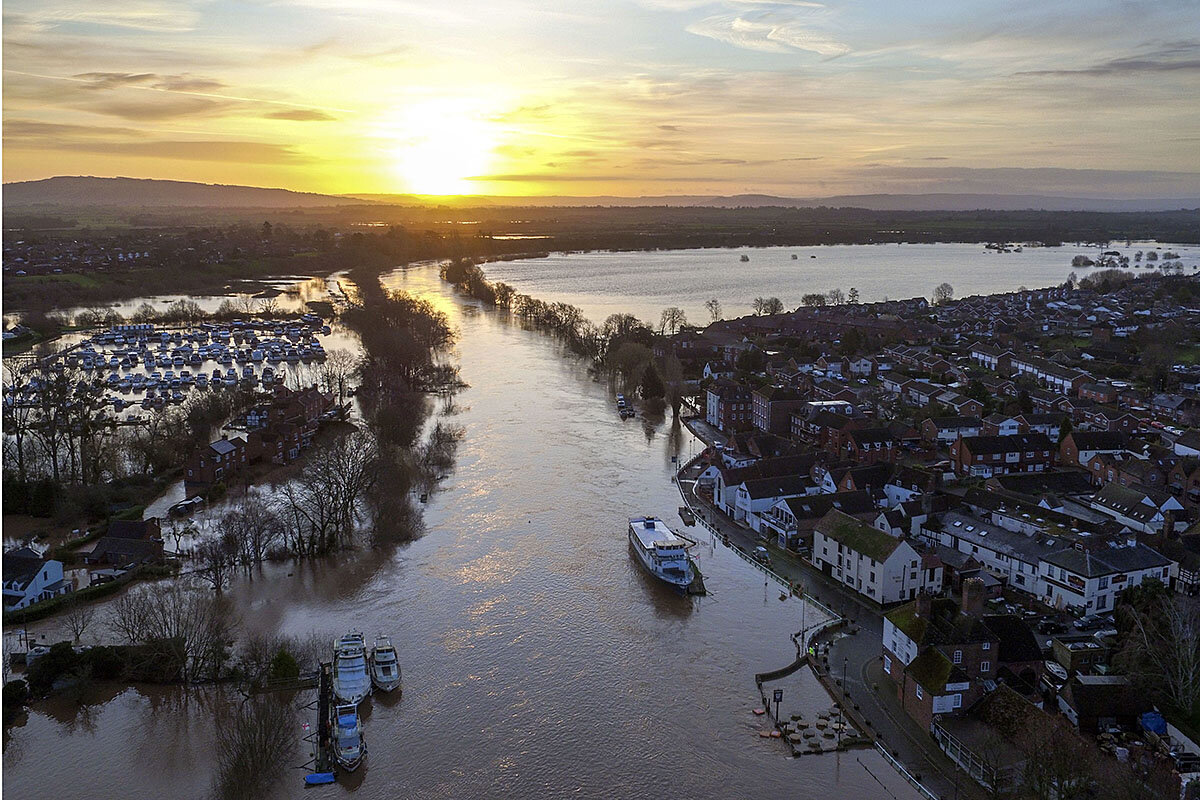
A look ahead
Thanks for joining us today. Come back tomorrow when we’ll introduce you to a priest who helps young people find alternatives to gang life.




